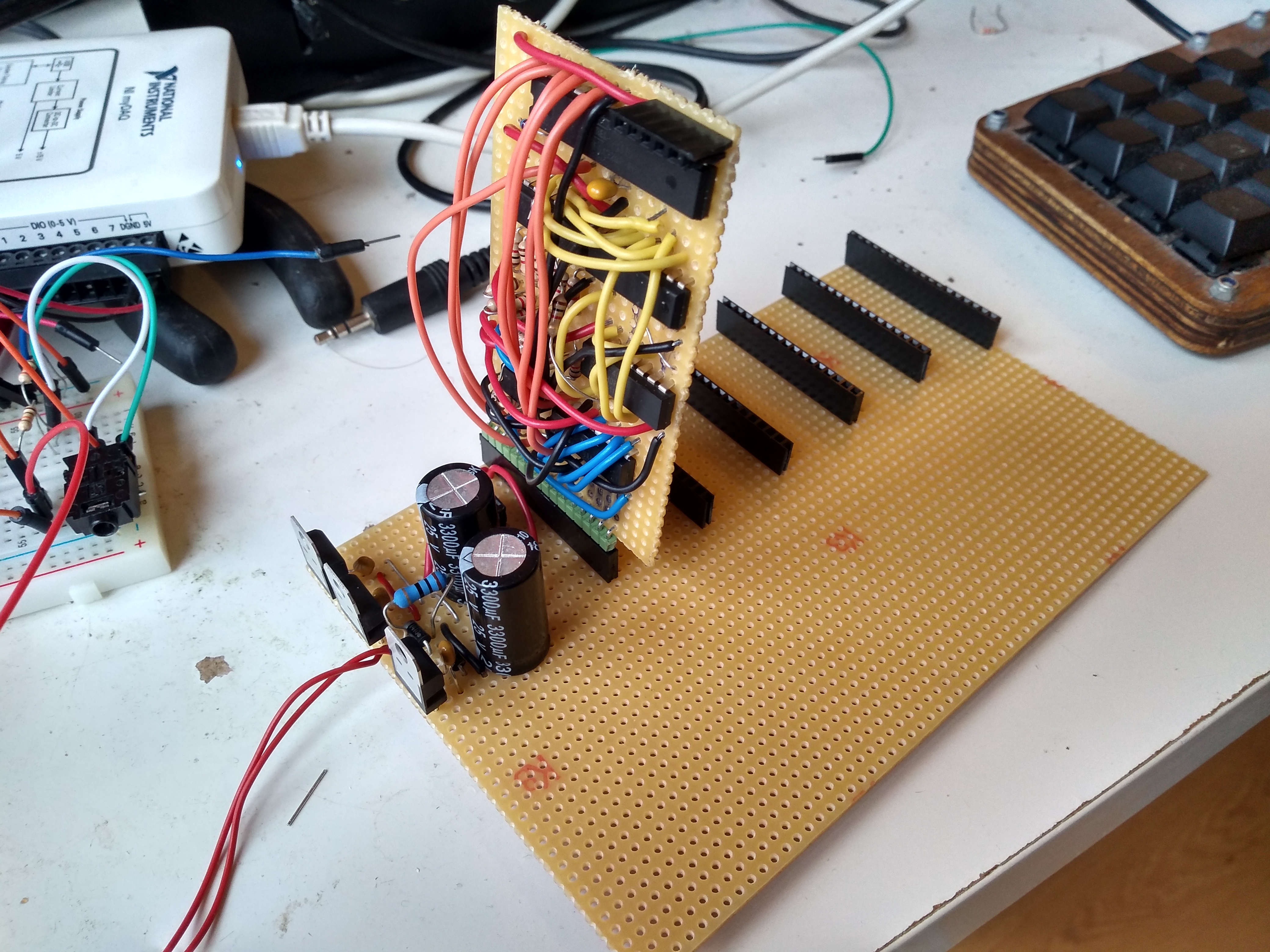Inspired by the Modulin, I’ve been making my own synthesizer, starting with a Game Boy violin, adding pressure sensitivity, and adding analog delay.
Over the past weeks I’ve been thinking about how I want to connect everything together. I knew I wanted to make it modular, but also that it had to be small enough to become a portable instrument, and hopefully easy to prototype and not too expensive. So I came up with what I call Microrack, a compact mixed-signal bus that is electronically compatible with CV. I typed up a rough description here. In short, it uses a bus with analog multiplexers for audio, and an I2C bus for control signals.
I started by making the power supply and base board. Ideally you’d have something more efficient and powerful, but I started with a simple half-wave rectifier into linear regulators. The I2C lines are exposed to an external Arduino board that will control the user interface and the digital bus. Here is a rough schematic. One thing that is regrettably absent is any sort of current limit or fuse.
Then I started working on the first module. I decided to start a little drum machine based on a noise source, a filter, and an envelope generator. The drum machine was mostly driven by the idea to make white noise in discrete logic. The heart of this module is a linear feedback shift register, implemented with two 74HC595 shift registers and a 4030 quad XOR gate.
The shift clock of the registers is driven by an atmega328p. The output clock of the last shift register is driven by a NOT-wired XOR gate to close the feedback loop. The output clock of the first shift register is driven by the atmega at a lower rate, to sample the noise. The outputs of the first shift register are fed to a R-R2 resistor ladder.
So by controlling the shift clock and the output clock, the bandwidth and randomness of the noise can be controlled. The DAC output is then fed into an opamp to translate from [0 5] V to [-5 +5] V, which is then output via the analog multiplexer. I’m pretty happy with the result.

Except then I fried the atmega.



